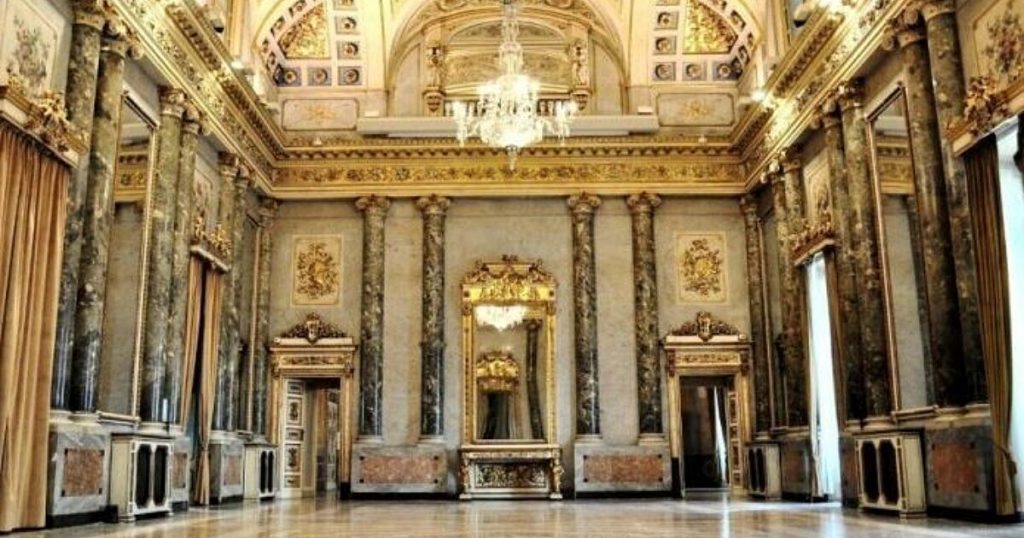When one thinks about Milan, thinks about innovation. As a matter of fact Milan is mainly known for its innovative spirit and for always staying ahead of the curve in every field, from fashion to finance.
What many don’t know, however, is that Milan harbors hidden gems of history and art within its borders, treasures that allow one to journey back in time: we are talking about historical residences once inhabited by the most influential, rich and powerful families of Milan.
These semi-secret places are hidden among the streets of the center of the city, often remaining elusive to passersby. The reason behind this is deeply ingrained in Milanese culture: opulence and wealth remain concealed within, while the facades exude a sense sobriety and are characterized by clean architecture and often minimalistic ornamentation.
In this article, we will talk about three of these amazing examples of Milanese architecture and historical heritage: Palazzo Serbelloni, Palazzo Clerici, and Palazzo Bagatti Valsecchi.
Palazzo Serbelloni
Palazzo Serbelloni is one of the first nobiliary edifices built in Corso Venezia, a street that between XVIII and XIX Century became one of the most luxurious ones of the city. Palazzo Serbelloni was in fact built between 1765 and 1793, based on a project by architect Simone Cantoni. The sober external architecture, with columns and a pediment, conceals opulent halls inside, where abundant use is made of gold and marbles; the two most important ones are Bonaparte and Parini Halls. Bonaparte Hall, named in such way to celebrate Napoleone Bonaparte and his friendship with duke Serbelloni, is the most opulent space of the building, characterized by stucco decorations adorned with foliage motifs, cherubs, and colorful paintings. In this chamber balls, theatrical performances and musical concerts were held, events that the Serbelloni family was delighted to share with the aristocracy of Milan.
The Parini Room, with a vaulted ceiling, is characterized by a decoration that echoes ancient themes dear to the culture of the time. The ceiling is frescoed and represents four figures, symbols of the Virtues or even mythological figures, such as Astrea and Bacchus. This chamber is named after Giuseppe Parini, one of the most important Italian writers, who was the tutor of the Serbelloni house.

Palazzo Serbelloni – cc:@miguidi
Palazzo Clerici
Palazzo Clerici, a jewel of Milan’s architectural heritage built in XVII Century, boasts Baroque elegance and historical significance. Designed by architect Giuseppe Piermarini, this palace showcases exquisite frescoes by the renowned artist Giovanni Battista Tiepolo. His masterful works adorn the ceilings of several rooms, including the majestic Sala Tiepolo. The vibrant colors, dynamic compositions, and ethereal figures demonstrate Tiepolo’s unparalleled skill and creativity, leaving visitors in awe by his artistic genius. These frescoes not only enrich the palazzo’s interior but also serve as enduring tributes to Tiepolo’s enduring legacy in the realm of Italian art. When built, Palazzo Clerici’s main purpose was to symbolize Clerici family’s prominence and influence in Milanese society. Today, the palazzo has been repurposed as a venue for cultural events, exhibitions, and gatherings, showcasing its transition from a noble residence to a vibrant cultural hub that welcomes visitors from all around the world.

Palazzo Clerici – cc:@smarteventi
Palazzo Bagatti Valsecchi
In the heart of Milan’s famous fashion district, the so called Quadrilatero della Moda, Palazzo Bagatti Valsecchi stands as a testament to the opulence and refined taste of the Bagatti Valsecchi family. Originating in the late XIX Century, the building remained the private residence of the family until just a few years ago, preserving its grandeur and historical charm with meticulously preserved furnishings, artwork, and decor.
Its interior exudes a sense of timeless elegance, boasting sumptuous furnishings, intricate woodwork, and ornate frescoes adorning ceilings and walls. The architectural splendor of the building, with its grand staircase adorned with ancient armors, its amazing library and grand salons, reflects a harmonious blend of Renaissance and Baroque.
All the amazing artworks that can be seen at Palazzo Bagatti Valsecchi were collected by two brothers, Fausto and Giuseppe Bagatti Valsecchi, that dedicated their lives to the creation of an amazing collection of unique art pieces.
Today, in the beautiful courtyard, visitors can also indulge in the culinary delights offered by the renowned restaurant “Salumaio di Montenapoleone”, which adds a modern twist to the building’s rich tapestry of history, culture, and art.

Palazzo Bagatti Valsecchi – cc: @mymilano
In conclusion, let me tell you a fun fact about Palazzo Bagatti Valsecchi: the late Pier Fausto Bagatti Valsecchi, one of the last members of the family who lived inside the palace, once said that when he was a little child he used to have a great time racing tricycles among medieval armors: what an uncommon childhood!
